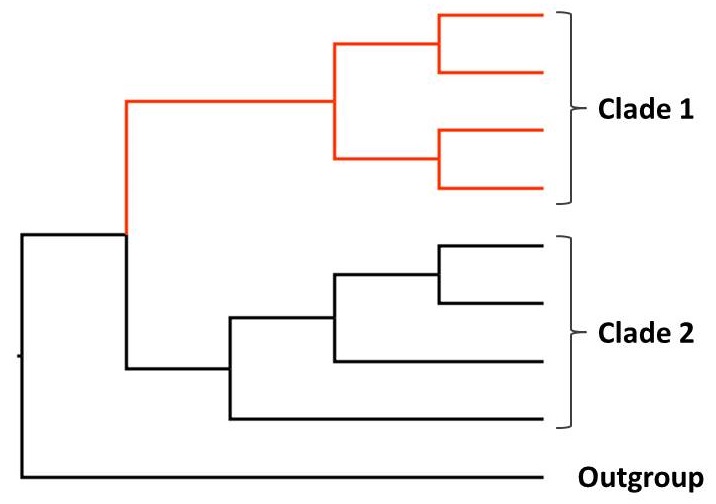With the recent posts about the beautiful spotted patterns that make up fashion prints inspired by leopards, jaguars, and cheetahs, it would be easy to think that all of the cats (Felidae) have coat patterns. However, as soon as you think of lions and pumas, you realize that some cats are not spotted but have plain fur. This raises the question: how did cats get their spots? Evolutionary analyses can help answer these questions. Luckily pattern variation and coat color morphs have been extensively studied in the Felidae. I summarized a few exciting results below.
How did cats get their spots?
One exciting analysis in evolutionary biology maps character traits on to phylogenetic trees. If we see that all of the species on a branch have one character (e.g. spotted coat) and all the species on another branch have a different character (e.g. plain coat), then we may infer that a change occurred in a common ancestor to all of the species on one of the branches. If we have an outgroup, then we can infer the ancestral state of the trait (Figure 1).

Allen et al (2011) used the approach described above to understand coat patterns across the Felidae. Their results are shown in Figure 2. The researchers observed that there was no strong pattern to spotted vs plain coats. While there are some clades like lions (Panthera) and South American cats (Leopardus) where most all species have spotted coats, the trait arose multiple times across the whole phylogeny. Since we cannot identify the ancestral trait (spotted or plain coats), these results mean that either spotted or plain coats arose multiple times through the evolutionary history of the cats, or alternatively that spotted or plain coats were lost multiple times. Interestingly, in the phylogeny lions are the only species that do not have spots; however, young lions do have spots (Figure 3) that change to plain coats as they age! This suggests that gene expression for spotted coats can change over an individual’s life time.

Data adapted from Allen et al 2011.

Photo Credit: Tabitha Finch
Using the phylogeny and environmental variables associated with each species, Allen et al identified a correlation between coat pattern and habitat. Specifically, patterned cats tended to live in closed habitats while plain coated species lived in open habitats. They also found that cats that spent more time in trees were more likely to be patterned than cats that stayed on the ground.
What genes control spotted patterns?
The genes that control coat patterning in big cats has not been investigated, although research using domestic cats suggests a possible mechanism. Cats have four main coat types: Abyssinian, spotted, mackerel, and blotched (Figure 4). Eizirik et al (2010) identified two genes, which they named Tabby and Ticked. Alleles (different variations) of Tabby produced mackerel and blotched (Figure 4C and 4D) patterns; where Ticked alleles produce the Abyssinian (fur has bands of color) or non-Abyssinian phenotype. The same paper also hypothesized that there is a third gene that modifies the Tabby locus to produce the spotted (Figure 4B) pattern. Of course on top of these loci that control pattern, there are also several genes that control the color of the fur (see here, and here). The fur color genes are expressed differently depending on how the pattern genes are expressed in the skin; this results in the beautiful diversity of felid coats inspiring fashion.

Kind thanks to my colleague Dr. Tabitha Finch for the lion picture!